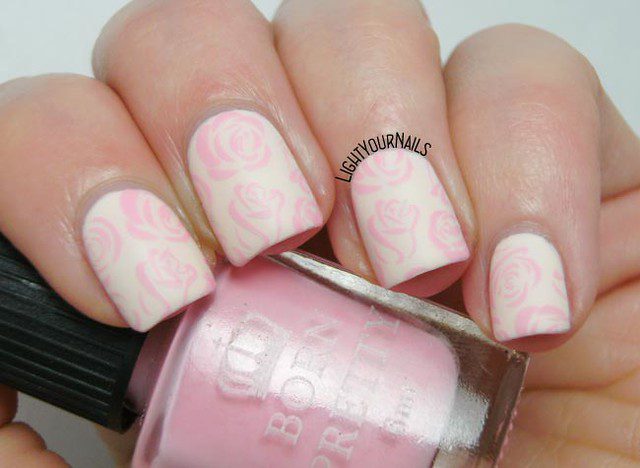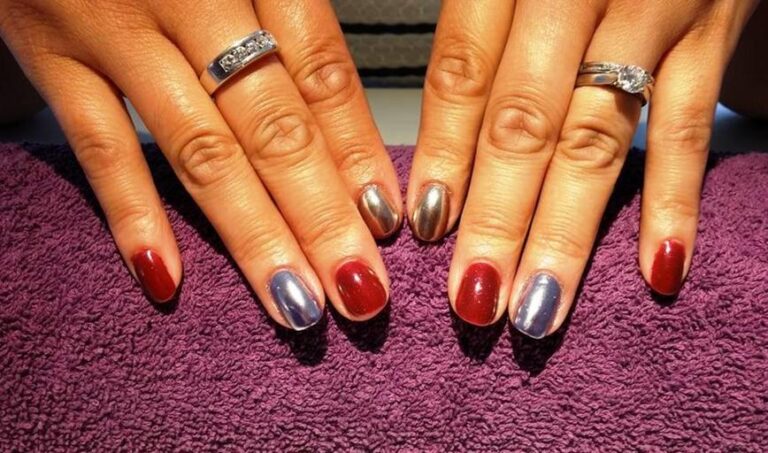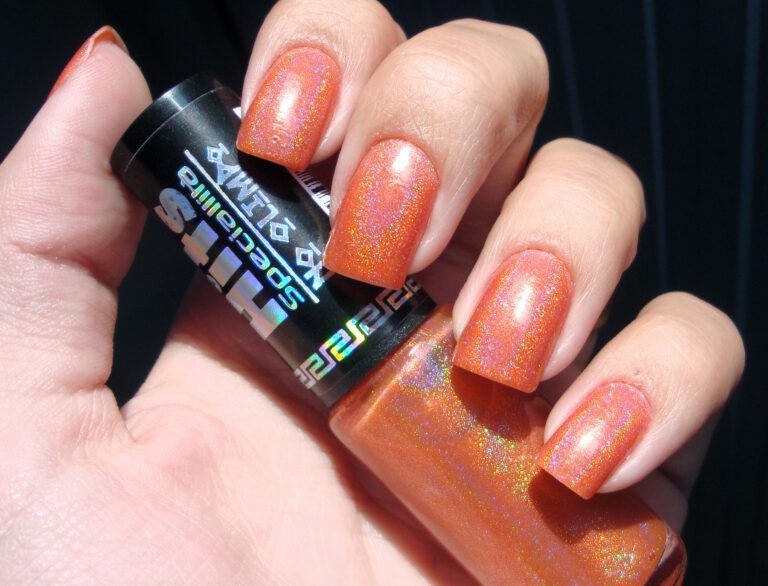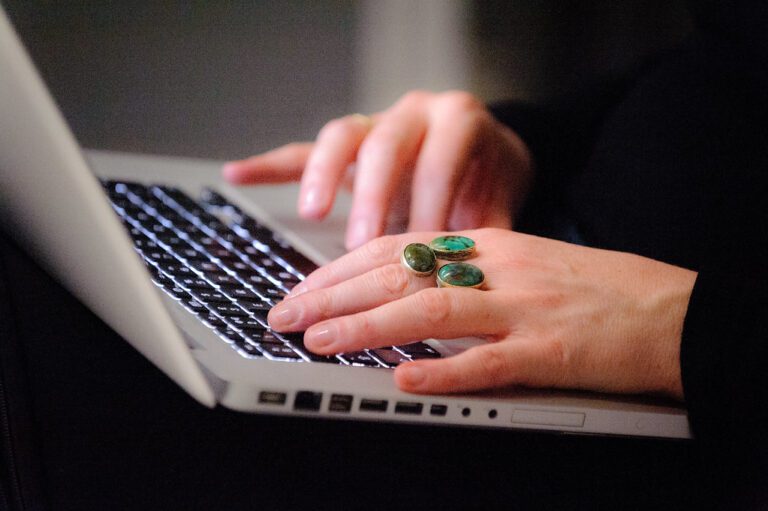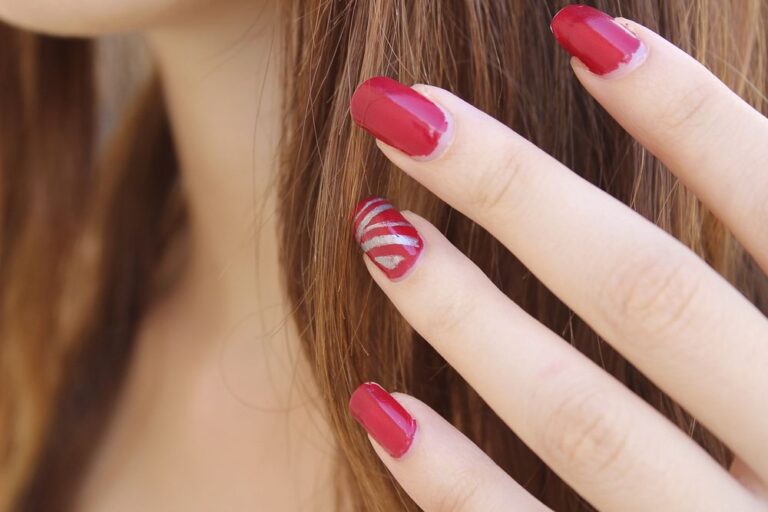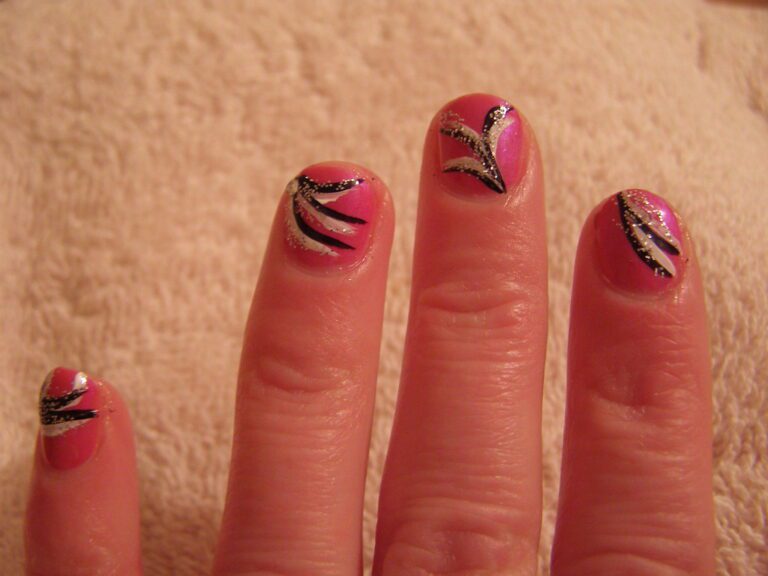“Buffing Beauty: Where Nail Buffer Is Used”
Nail buffing is an essential part of nail care, providing a way to achieve smooth and polished nails without the use of nail polish. Whether done at home or in a professional salon, nail buffing offers a range of benefits for nail health and appearance. This article explores the various aspects of nail buffing, from its purpose and techniques to its impact on nail health and the beauty industry.
Key Takeaways
- Nail buffing is a non-invasive way to achieve shiny and smooth nails.
- Using the right type of nail buffer is crucial for achieving the desired results.
- Regular nail buffing can improve blood circulation to the nail bed.
- Over-buffing can weaken the nail and lead to damage.
- Hygiene and safety measures are important during professional nail buffing services.
The Essentials of Nail Buffing

Defining Nail Buffing and Its Purpose
Nail buffing is the process of polishing the nails to create a smooth, shiny surface. It involves using a buffer, which is a tool or block designed to even out ridges and remove dullness from the nail plate. The primary purpose of buffing is to enhance the nails’ natural beauty without the need for polish, although it can also prepare the nail for a smoother polish application.
The act of buffing increases blood circulation to the nail bed, which can promote healthier nail growth. It’s a simple yet effective way to maintain well-groomed nails. Here are some key reasons why people buff their nails:
- To achieve a natural shine
- To even out the nail surface
- To improve nail polish adherence
- To stimulate nail growth
Tip: Always buff nails gently to avoid thinning the nail plate, which can lead to weakness and breakage.
Types of Nail Buffers and Their Uses
Nail buffers are essential tools in achieving a polished, smooth nail surface. Unlike nail files, which are primarily used to shape and shorten nails, buffers are designed to polish and create a lustrous finish. There are several types of nail buffers, each suited for different aspects of the buffing process. The most common types include:
- Standard Block Buffers: These are typically rectangular blocks with different levels of grit on each side. They are used sequentially to smooth, buff, and shine the nail.
- Cushioned Buffers: Softer and more flexible than block buffers, cushioned buffers conform to the nail’s shape and are gentle on the nail bed.
- Glass or Crystal Buffers: Durable and long-lasting, these buffers provide a fine polish and are often preferred for their hygienic properties.
Each type of buffer is designed for specific uses:
- Coarse Grit Buffers are used to smooth out ridges and uneven nail surfaces.
- Medium Grit Buffers prepare the nail for polishing by further smoothing the surface.
- Fine Grit Buffers create the final shine and are used for the last step in the buffing process.
Tip: Always start with the coarsest grit and work your way to the finest to achieve the best results without damaging the nail.
Selecting the right buffer is crucial for both effectiveness and nail health. It’s important to replace buffers regularly to maintain hygiene and ensure the best finish.
The Step-by-Step Process of Nail Buffing
Nail buffing is a crucial step in achieving smooth and glossy nails. It typically involves three main steps: filing, buffing, and polishing. The buffing process aims to smooth out ridges and imperfections on the nail surface, resulting in a polished and healthy appearance. Here’s a simplified breakdown of the nail buffing process:
- Filing: Begin by shaping the nails with a nail file to achieve the desired length and shape.
- Buffing: Use a buffing block or buffer to gently smooth the nail surface, removing any ridges or uneven areas.
- Polishing: Complete the process by applying a nail polish or buffing cream to add shine and luster to the nails.
Tip: Avoid over-buffing, as it can weaken the nails and lead to damage.
After the buffing process, your nails will appear smoother and more radiant, providing the perfect canvas for nail polish or a natural look.
Professional Nail Care: Buffing in Salons

The Role of Buffing in Manicure and Pedicure Services
In the realm of professional nail care, buffing plays a pivotal role in both manicure and pedicure services. It’s the crucial step that precedes the application of nail polish, ensuring that the nail surface is smooth and even. This not only enhances the adherence of the polish but also contributes to a flawless, high-gloss finish that clients adore.
Nail technicians utilize a variety of buffing tools, each designed to achieve a specific level of shine and smoothness. From block buffers to electric buffing machines, the choice of tool often depends on the client’s nail condition and the desired outcome. Here’s a quick rundown of the buffing process in a salon setting:
- Assessing the nail’s condition and selecting the appropriate buffer
- Gently filing the nail to the desired shape
- Buffing the nail surface to remove ridges and imperfections
- Applying a nourishing cuticle oil to hydrate and protect
Tip: Always communicate with your nail technician about your nail health and any concerns you may have. Their expertise can guide you to the best buffing technique for your nails.
The expertise of the nail technician is not only in their ability to buff but also in maintaining the highest standards of hygiene. Single-use files and buffers or properly sanitized tools are essential to prevent cross-contamination and ensure client safety.
Tools and Techniques Used by Nail Technicians
Nail technicians employ a variety of tools and techniques to ensure that each manicure and pedicure service is performed to the highest standard. Essential tools include nail files, cuticle pushers, nail clippers, and nail brushes, which are used in conjunction to prepare the nail bed for buffing. For the buffing process itself, technicians may use a range of buffers from coarse to fine grit to achieve the desired shine and smoothness.
UV or LED lamps are crucial for curing gel polish, a service that has become increasingly popular in salons. The choice of lamp can affect the curing time and overall finish of the manicure, making it an important consideration for nail professionals.
Remember: The quality of the tools and the proficiency of the techniques used can significantly impact the final outcome of the nail service.
To maintain the highest level of hygiene, nail technicians are expected to sterilize their tools after each use. This not only ensures the safety of clients but also prolongs the life of the tools, making them a worthy investment for any salon.
Maintaining Hygiene and Safety During Buffing
In the realm of nail care, maintaining hygiene and safety is paramount, especially during the buffing process. Nail technicians are advised to follow stringent sanitation protocols to prevent the spread of infections. This includes the use of antimicrobial soap and thorough handwashing before and after each client interaction, akin to the practices recommended for food handlers and dental assistants.
- Regular handwashing with antimicrobial soap
- Disinfection of tools before and after use
- Use of disposable buffers or dedicated buffers for each client
Remember: A clean environment is as crucial as the service provided. Ensuring that all surfaces, including nail stations and equipment, are sanitized will uphold the salon’s reputation for safety and cleanliness.
Furthermore, it’s essential to educate clients on the importance of nail hygiene. Encouraging them to arrive with clean hands and nails contributes to a safer buffing experience. Salons should also have clear safety precautions in place, similar to those necessary when operating a floor buffer, to prevent any accidents or injuries.
Nail Buffing at Home: Tips and Tricks

Selecting the Right Buffer for Home Use
When selecting a buffer for home use, it’s essential to consider the grit of the buffer. Different grit types offer varying levels of abrasiveness, so choosing the right grit is crucial for achieving the desired nail texture. Here’s a quick reference table for understanding grit types:
| Grit Type | Abrasiveness Level |
|---|---|
| Fine | Low |
| Medium | Moderate |
| Coarse | High |
Remember to match the grit type with your specific nail care needs. Additionally, always prioritize salon quality buffers for durability and optimal performance.
For best results, follow these simple steps:
- Identify your nail texture and condition
- Choose the appropriate grit type
- Buff gently and evenly across the nail surface
Tip: Avoid excessive buffing, as it can weaken the nails over time.
DIY Nail Buffing Techniques
Mastering the art of nail buffing at home can elevate your manicure to professional standards. Begin with clean, dry nails, free of any polish or oils. Start with the coarsest side of your buffer to smooth out ridges and imperfections, then progress to the finer sides for a high-gloss finish. Remember to buff in one direction to prevent nail damage.
Consistency is key when it comes to DIY buffing. Develop a routine that works for you, and stick to it for the best results. Here’s a simple guide to follow:
- Wash and dry hands thoroughly.
- Gently push back cuticles.
- Use the coarse side of the buffer to even out the nail surface.
- Switch to the medium-grit side to further smooth the nail.
- Finish with the fine-grit side for a shiny surface.
- Apply a nourishing cuticle oil to hydrate.
Tip: To help your manicure last longer, gently buffer your nails before applying polish. This creates a smooth canvas, enhancing polish adhesion and longevity.
Avoid over-buffing, as it can weaken the nails. Aim to buff no more than once a week, and always follow with a hydrating treatment to maintain nail health.
Common Mistakes to Avoid in Nail Buffing
Nail buffing, when done correctly, can lead to shiny, healthy-looking nails. However, there are common pitfalls that enthusiasts should be wary of to maintain nail integrity. One of the most frequent errors is over-buffing. This can strip the nails of their natural oils, leading to brittleness and breakage.
Using the wrong buffer can also cause damage. It’s important to select a buffer with the appropriate grit for your nail type. A too coarse buffer can create scratches, while a too fine one may be ineffective. Here’s a quick guide to help you choose:
- Coarse buffer (80-100 grit): for shaping acrylic or very thick nails
- Medium buffer (180-220 grit): for smoothing nail edges
- Fine buffer (240-600 grit): for polishing the nail surface
- Ultra-fine buffer (600-2400 grit): for shining the nail
Another mistake is neglecting the proper technique. Buff in one direction rather than a back-and-forth sawing motion, which can cause heat buildup and weaken the nails. Lastly, avoid buffing too frequently. Once a month is sufficient for most people.
Tip: Always moisturize your nails after buffing to replenish natural oils and prevent dryness.
The Impact of Nail Buffing on Nail Health
Benefits of Regular Nail Buffing
Regular nail buffing promotes natural shine and smoothness, enhancing your nails’ appearance without polish. It stimulates blood flow to the nail bed, promoting healthy nail growth and strength. To maintain the shine of your nails after buffing, use cuticle oil and hand creams. Implementing a consistent nail care routine is essential for healthy and beautiful nails. Here are some tips for maintaining nail health:
Potential Risks and How to Mitigate Them
While nail buffing is generally a safe practice, overzealous buffing can lead to thinning of the nail plate, which in turn makes the nails more prone to breakage and other damage. To mitigate these risks, it is crucial to buff the nails gently and to use a buffer with the appropriate grit for your nail type.
- Use a buffer with a fine grit for natural nails to prevent excessive abrasion.
- Limit buffing to once a week to allow nails to recover and maintain their strength.
- Hydrate the nails and cuticles after buffing with a nourishing oil or cream to replenish moisture.
Remember: Less is more when it comes to buffing. Gentle strokes will achieve a smooth finish without compromising nail integrity.
Nail Care Best Practices for Healthy Nails
Maintaining healthy nails is essential for overall nail care. Regular moisturizing and proper nail hygiene are key factors in promoting strong and beautiful nails. Additionally, keeping nails clean and dry, avoiding prolonged exposure to water, and trimming nails straight across are important practices for nail health. Implementing these practices can contribute to the strength and resilience of your nails, ensuring they remain in optimal condition. It’s also important to use a moisturizer regularly to keep the nails hydrated and nourished. Remember, healthy nails are the foundation of beautiful nails.
Nail Buffing in the Beauty Industry

Trends and Innovations in Nail Buffing
In the realm of nail art, mastering the basics is key. Start with a well-prepared nail bed; clean, shape, and buff your nails for an ideal canvas. The return of the buff: naked nails are back in the spotlight – Here’s why the ‘no-nicure’ is being hailed this season’s status symbol. According to experts, the ‘no-nicure’ trend is gaining momentum, emphasizing the natural beauty of nails without elaborate manicure trends. This trend reflects a shift towards embracing simplicity and authenticity in nail care. To achieve the perfect ‘no-nicure’ look, focus on enhancing the natural shine and smoothness of the nails through buffing and gentle maintenance. Implementing a table for presenting structured, quantitative data is not applicable in this context. Instead, a bulleted list can be used to highlight the key steps for achieving the ‘no-nicure’ look: – Clean and shape the nails – Buff the nails to enhance natural shine and smoothness – Emphasize simplicity and authenticity in nail care. For those seeking the ‘no-nicure’ look, here’s a valuable tip: Prioritize the health and natural beauty of your nails, and let them shine with understated elegance.
Buffing Products and Their Market Evolution
The nail care industry has witnessed a significant transformation in the realm of buffing products. With a focus on innovation and consumer preferences, the market has evolved to offer a diverse range of buffing tools tailored to various needs. From the traditional emery boards to sophisticated electric buffers, the choices are extensive and continue to grow.
Market analysis indicates a steady increase in consumer spending on nail care products, including buffers. This trend is reflective of a broader surge in the beauty and wellness sector, with Europe leading in market share due to heightened consumer investment in beauty services. Polishing cleaners, an essential companion to buffing products, are also expected to see a rise in demand, projecting a compound annual growth rate (CAGR) of 2.30% by 2032.
Tip: When selecting a buffing product, consider not only the type but also the grit level appropriate for your nails to ensure optimal results without causing damage.
The future of buffing products seems promising, with manufacturers focusing on ergonomic designs and multi-functional features. As the market continues to expand, consumers can anticipate more innovative solutions that cater to their nail care routines.
The Future of Nail Buffing Techniques
As the beauty industry continues to innovate, the future of nail buffing techniques looks both bright and diverse. The emergence of luxury nail treatments has set the stage for a new era where buffing is not just about achieving a smooth surface, but also about incorporating extravagant designs and materials. Aura nails and 3D embellishments are expected to become more prevalent, offering a multi-dimensional aesthetic that goes beyond traditional buffing methods.
In the pursuit of these advanced styles, the tools and products used for buffing will evolve. We may see the development of specialized buffers that cater to intricate designs and the need for precision in applying and maintaining these luxurious finishes. Moreover, the focus on nail health will drive innovations in buffing techniques that promise beauty without compromising the integrity of the natural nail.
Remember, while embracing new trends, it’s crucial to balance style with nail health. Regular breaks from intensive treatments and the use of nourishing products can help maintain strong, healthy nails amidst the allure of cutting-edge designs.
Nail buffing is an essential technique in the beauty industry, providing a smooth and glossy finish to nails. It involves the use of buffing tools and techniques to create a polished look without the need for nail polish. Nail technicians and beauty enthusiasts alike understand the importance of nail buffing in achieving a professional and elegant appearance. At NAILinspire.com, we offer a comprehensive guide to nail buffing, including tips, tutorials, and product recommendations. Visit our website today to discover the ultimate nail art design library and elevate your nail care routine.
Frequently Asked Questions
What is nail buffing and how does it work?
Nail buffing is a cosmetic treatment that involves smoothing and shining the surface of the nails using a buffer. It works by removing ridges, imperfections, and discoloration, resulting in a glossy and polished appearance.
What are the different types of nail buffers available?
There are several types of nail buffers, including block buffers, four-way buffers, and electric buffers. Each type serves a specific purpose, such as smoothing, shining, and polishing the nails.
Is nail buffing safe for natural nails?
When done correctly and not excessively, nail buffing is safe for natural nails. It helps improve nail health by stimulating blood flow and promoting natural shine. However, over-buffing can weaken the nails.
Can nail buffing replace nail polish?
Nail buffing can provide a natural shine and gloss to the nails, but it cannot replace the decorative and protective benefits of nail polish. Buffing is often used as a pre-treatment before applying nail polish.
How often should nail buffing be done?
For most people, nail buffing can be done once a week to maintain healthy and shiny nails. However, frequency may vary based on individual nail conditions and preferences.
What are the best practices for DIY nail buffing at home?
When buffing nails at home, it’s important to use gentle pressure, follow a consistent buffing motion, and avoid over-buffing. Additionally, using a high-quality buffer and moisturizing the nails afterward are essential for best results.

